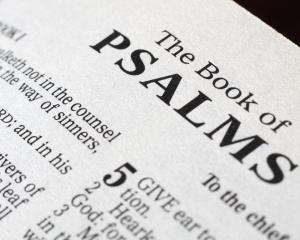
Billy Graham's death last month sends Ian Harris on a trip down memory lane.
For both fans and critics, news of Billy Graham's death aged 99 last month will stir memories of his evangelising crusades in New Zealand in 1959 and 1969. It certainly did for me. I was involved in both crusades in different ways and in the decade between the two my perceptions underwent a sea-change.
A strength of the Graham crusades - he called them "missions" after the American invasion of Iraq in 2003 made "crusade" a dirty word - was his reliance on churches of the host city to provide the infrastructure they required. For weeks beforehand, sessions were held to train the counsellors who would move in at the climax of his meetings, when he called on those touched by his message to come forward and commit themselves to Christ. This they did in their hundreds, and the counsellors would speak to them and arrange a follow-up.
I was among those counsellors at Carlaw Park in Auckland in 1959. I quickly found the decision to come forward was more often a response to the emotion of the moment than any intention to pursue that commitment by joining a local congregation, which was the point of the exercise.
This appeal to the emotions, together with Graham's insistence on biblical literalism, fear of hell and the imminence of Christ's second coming, was one of the main criticisms levelled at him. Some likened the crusades to Hitler's mass rallies, but that was absurd: there was nothing in the call for commitment I hadn't heard in the Bible Class camps of the times.
As a young reporter on the Auckland Star, I was assigned to cover various events, including Graham's meeting with the Governor-General, Viscount Cobham. There he noticed the photographer's flash and remarked how current glamour model Sabrina took care to offset any unflattering effects. Sabrina did the trick: my story made the front page.
The Star's editor responded to the buzz of public curiosity by ordering comprehensive coverage of all Graham's meetings. He might have come to rue that. Graham urged his crowds to write in expressing their appreciation, and hundreds did so.
The following decade was a period of major change in New Zealand and around the world. Bishop John Robinson published his bombshell best-seller Honest to God. The Beatles burst on the scene. The hippy generation triggered a social revolution. Protests broke out against the Vietnam war. The civil rights movement gathered strength in the US. Television became part of the New Zealand scene. The Presbyterian Church heard a charge of heresy against Lloyd Geering. And in 1969, Graham returned for another crusade.
I was now editor of The New Zealand Methodist, and conscious of a deep division in the church. Conservative members supported the Graham approach with its appeal to a religion of the heart, while a strong liberal wing was repelled by his fundamentalist stance and his skirting around urgent social issues. I no longer shared the enthusiasm of his fans, but nor could I find him as objectionable as the critics did. As newsman in the middle, I resolved to give Graham fair coverage, but also to highlight that wider social and economic perspective as essential Christian concerns.
The most interesting thing to emerge that year was Graham's assessment of Richard Nixon as the best-prepared president in US history, alongside a conviction the world was approaching the last days of turbulence and war that portended Christ's second coming. He didn't draw the obvious connection - and anyway, he proved wrong on both counts.
I couldn't warm to Graham brandishing the fear of God (and hell) to stimulate a response among his audience. Nor to a parallel he drew between the fear (or reverence) of God and a child's fear of a rattlesnake. By 1969, hell's terrors were losing their potency, and the snake analogy was bizarre.
To liberal Christians, biblical literalism undermines a mature understanding of the gospel and the future of the church. Like-minded scholars have spearheaded a major rethink of the way Christianity is understood and presented, with buy-in across the denominations, though not usually from their official church bodies.
From that perspective, the Graham crusades look like the last hurrah of a pre-modern theological superstructure, which this week's census will no doubt show continues to erode.
That said, Graham's influence around the world, for better and for worse, is undeniable. He was a phenomenon of his times. In our secular era, the chances of another like him are zilch.
Ian Harris is a journalist and commentator.












